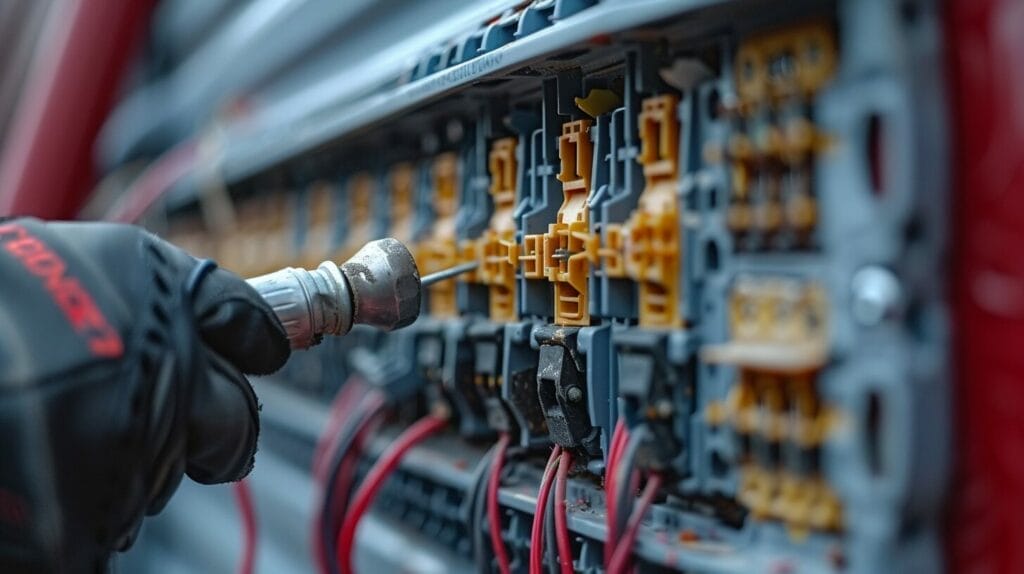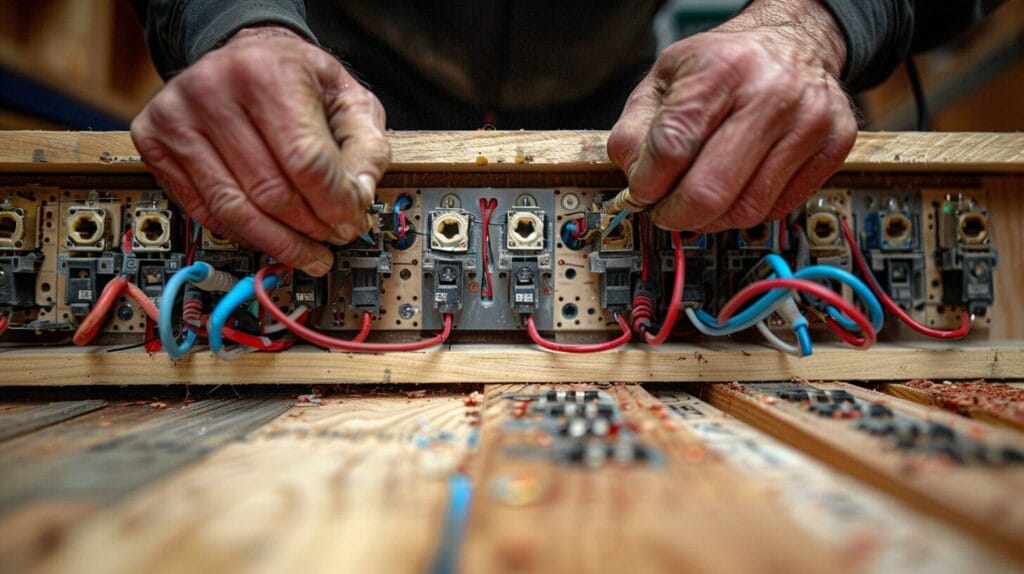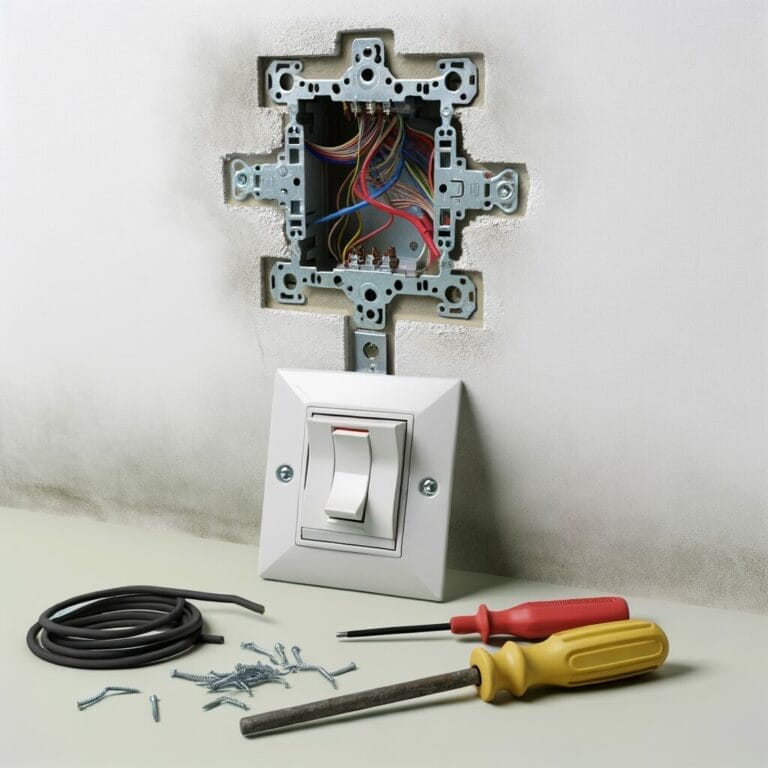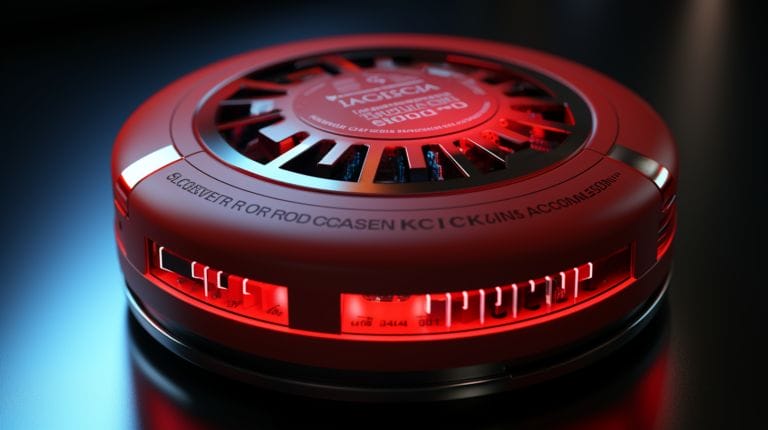Wire a Light Switch From an Outlet: a Step-By-Step Guide
Looking to add a light switch connected to an outlet? Wondering how to do it step-by-step? Explore our Wire a Light Switch From an Outlet guide for easy-to-follow instructions on wiring a light switch from an outlet, empowering you to enhance your lighting setup with control and convenience.
Key Takeaways
- Understand the functions of switches and outlets in the circuit.
- Identify specific outlets and switches for proper wiring.
- Use correct wire connectors to ensure safe electricity flow.
- Prepare outlet by identifying and rewiring white and black wires.
- Connect light switch by creating stable pigtail connections and securing wires.
Understand the Basics of Wiring a Light Switch from an Outlet

Grasping the fundamental functions of switches and outlets in a circuit is the first step in wiring a light switch. Electricians often encounter scenarios where a light fixture needs a new switch, and the nearest power source is an electrical outlet. It’s essential to identify the specific electrical outlets and switches involved in the circuit to integrate the new switch seamlessly.
Using the correct wire connectors when connecting a light switch from an outlet is crucial for a secure and reliable connection. Properly joining the wires guarantees that the electricity flows efficiently to the light fixture, preventing any potential hazards.
Gather Necessary Tools and Understand Key Components

Equipping yourself with essential tools and understanding the key components involved in the process is critical. Tools include a screwdriver for securing connections, and a wire stripper to remove insulation from wires. Understanding the role of the neutral wire, hot wire, and ground wire is vital. The neutral wire completes the circuit, the hot wire supplies power, and the ground wire provides a safe path for electrical currents.
Knowing the terminology is also important. A receptacle is where the outlet or switch is installed, a terminal is a connection point, and a pigtail is a short wire used to connect multiple wires together.
Preparing Your Outlet for Connection to the Light Switch

Safety is a priority when preparing the outlet for connection to the light switch. After shutting off the power supply at the breaker, remove the outlet from the drywall to access the wiring inside. Identifying the white wire (neutral) and the black wire (hot) is imperative. Rewire the outlet to make it ready for connection to the light switch, ensuring the connections are secure and properly insulated.
Connect Your Light Switch to the Outlet

Wire the light switch to the outlet by carefully stripping the wires and connecting them securely. Mark the white wire, then connect it to the light switch along with the black wire in a pigtail connection. Ensure a secure connection by wrapping the wires clockwise around the screws on the switch. Creating a pigtail connection involves twisting the white wire with a section of additional white wire and a wire nut. This combined wire then connects to the silver screw terminal on the switch. Similarly, the black wire is connected to the brass screw terminal.
How Can I Wire a Light Switch and Outlet Combo Using Your Step-By-Step Guide?
To wire a light switch and outlet combo, follow the light switch outlet wiring diagram provided with your kit. Start by turning off the power and removing the old outlet. Connect the ground wires first, then the neutral, and finally the hot wires. Attach everything securely and carefully test before finishing up.
Installing a GFCI Receptacle and Finishing the Setup

We can now enhance safety measures by installing a GFCI receptacle and completing the setup after connecting the light switch to the outlet securely.
- Install a GFCI Receptacle: Replace the existing outlet with a GFCI receptacle for added protection against electrical hazards.
- Secure the GFCI Receptacle and Light Switch: Fasten both the GFCI receptacle and light switch to the drywall using appropriate screws and make sure they’re flush with the wall surface.
- Double-Check Wiring Connections: Before closing up the outlet and switch boxes, double-check all wiring connections to confirm they’re secure and correctly placed.
- Testing the Setup: Turn the breaker back on and test the light switch to confirm proper functionality. Additionally, press the ‘Test’ and ‘Reset’ buttons on the GFCI receptacle to verify that it’s working correctly.
Conclusion
Now that you have successfully wired a light switch from an outlet, you can confidently control your lights with ease. Remember to always prioritize safety when working with electricity and double check your connections before turning the power back on.
With the right tools and knowledge, you can tackle this DIY project and enjoy the convenience of a well-lit space.
Happy wiring!
Frequently Asked Questions
What tools do I need to wire a light switch from an outlet?
You will need tools such as a screwdriver, wire stripper, pliers, and possibly a voltage detector.
Can I wire a light switch to an outlet without turning off the power?
No, it is crucial to turn off the power at the breaker before working on any electrical wiring to prevent the risk of shock.
How do I identify the neutral wire when wiring a light switch from an outlet?
The neutral wire is typically a white wire in the electrical circuit. It is important to distinguish it from the hot wires.
What is the purpose of a pigtail in wiring outlets and switches?
A pigtail is used to connect multiple wires together, making it easier to attach them to a switch or outlet.
Can I use the same screw terminal on a switch for multiple wires?
No, it is not recommended to connect multiple wires to a single screw terminal on a switch or outlet as it can lead to poor connections and be a safety hazard.







